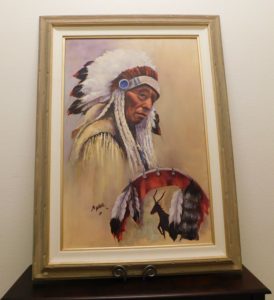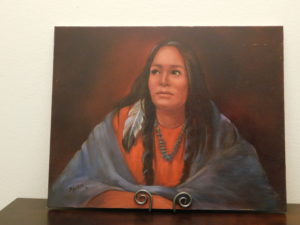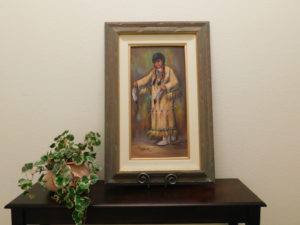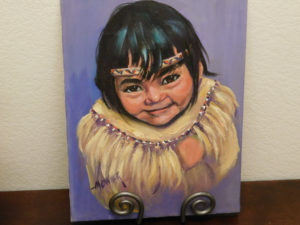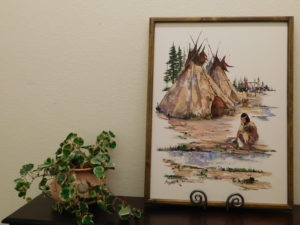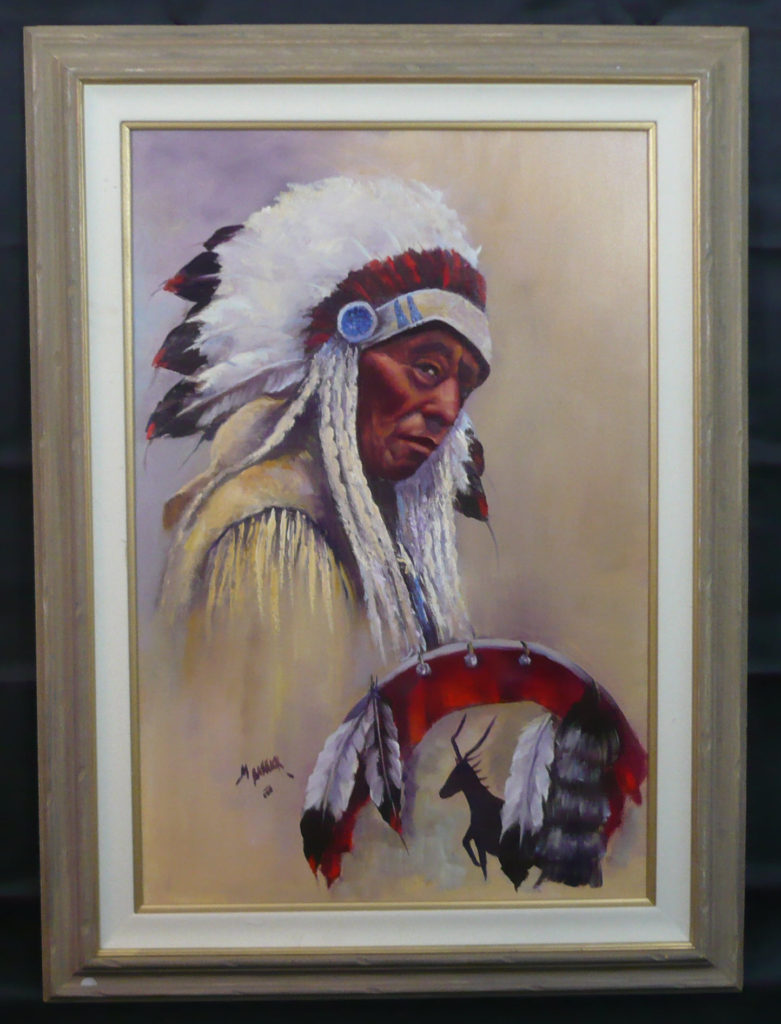Monna Barrick Art Show at Eagle Rock Gallery
NOTE: AS OF 6/20/2022, EAGLE ROCK GALLERY, AFTER SERVING THE IDAHO FALLS COMMUNITY SO VERY WELL, HAS CLOSED, AND WILL BE GREATLY MISSED. SEE ALL OF MONNA’S ART BY APPOINTMENT, CALL JIM SCHUETT AT 480-277-7550.
Visit Eagle Rock Gallery of Fine Art in Idaho Falls, Idaho and see Monna Barrick’s Art Show. This Is a permanent display of her Original Oil Paintings available for sale.

Hi, I’m Monna Barrick, originally from Oklahoma and have lived in Mesa, Arizona for many years. Since 1982, I have been lucky enough to make my living as an artist, having studied with such notables as Leon Franks, John Howard Sanden, Bettina Steinke, Leslie DeMille and Norman Rockwell’s famous art course instructors.
My works are impressionism and are mostly done with palette knife, combining some details with the brush. I love to paint all subjects including this beautiful desert so rich in color.
A wonderful influence in my life was my late husband Jim Barrick, a professional artist in his own right. I learned many valuable lessons from him. I now teach art and painting two days a week in Mesa.
Life is great when your job is doing what you love!
I really hope you like what you see here as much as I enjoy painting them. Thank you for looking!
Monna
Some of the Art on display at Eagle Rock Gallery”
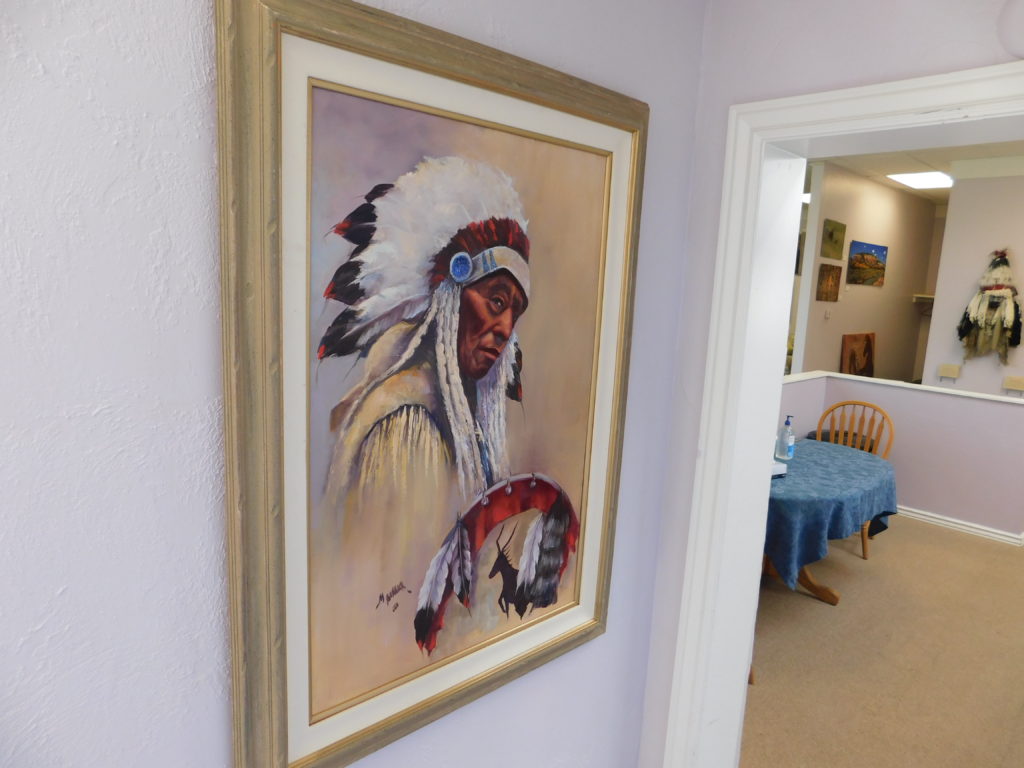
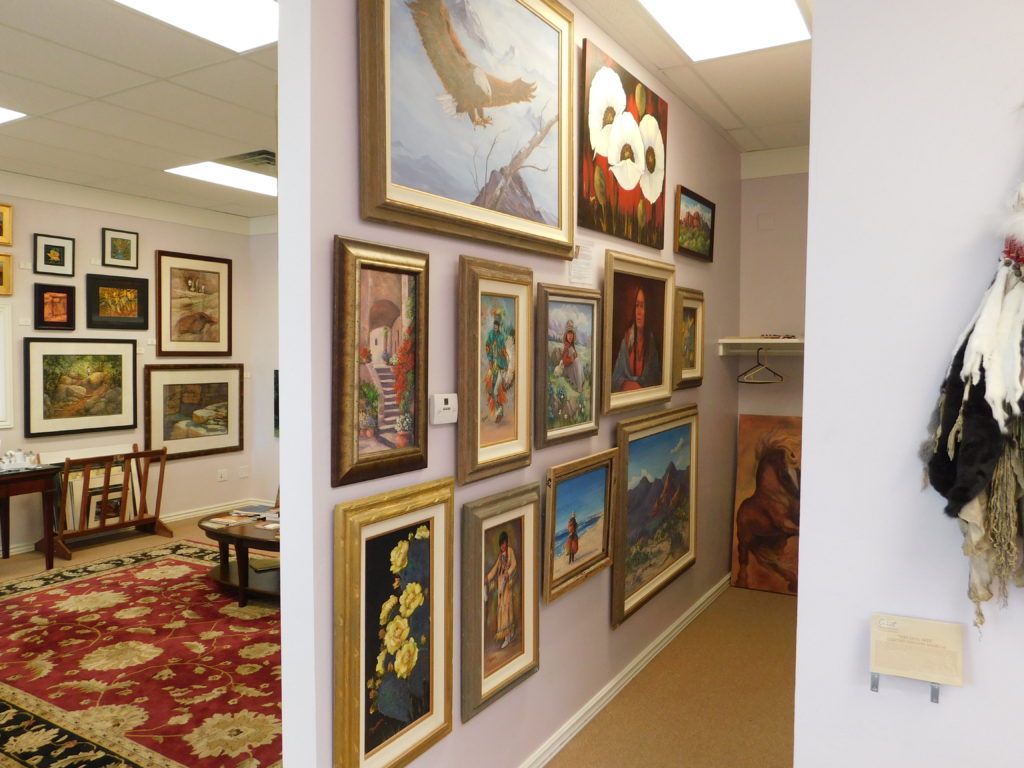
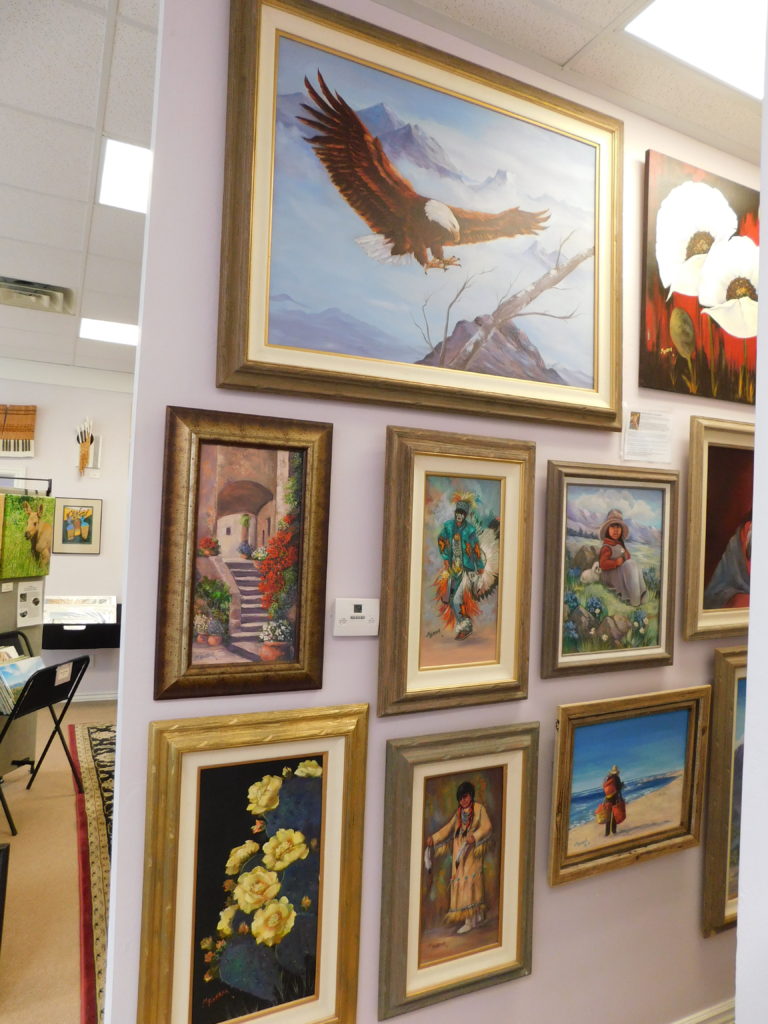

Here is a list of Monna’s work on display at Eagle Rock Gallery:
| Monna Barrick Original Oil Paintings | |||
| Item # | Painting Title | Size | Retail |
| 2 | “End of Flight” | 30×40 Framed | $ 3,500 |
| 4 | “Elephant Head in Tubac” | 30×40 Framed | $ 2,800 |
| 5 | “White Poppy’s” | 30×40 Gallery Wrapped | $ 2,100 |
| 10 | “Rocky Point” | 16×20 Framed | $ 560 |
| 12 | “Superstitions” | 12×24 Framed | $ 700 |
| 14 | “Tiaquepaque” | 10×20 Framed | $ 490 |
| 16 | “Peasant Girl and Dog” | 16×20 Framed | $ 560 |
| 17 | “Serenading Quail” | 11×14 Framed | $ 350 |
| 19 | “Dancer-Female” | 10×20 Framed | $ 490 |
| 20 | “Portrait of an Indian Lady” | 22×28 Not Framed | $ 1,120 |
| 21 | “Dancer-Male” | 10×20 Framed | $ 490 |
| 22 | “Yellow Prickly Pears” | 12×24 Framed | $ 560 |
| Above on art wall. | |||
| 24 | “Chief” | 24×36 Framed | $2,000 |
| Above at entry of gallery. | |||
